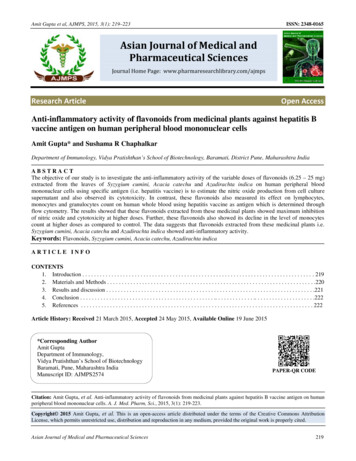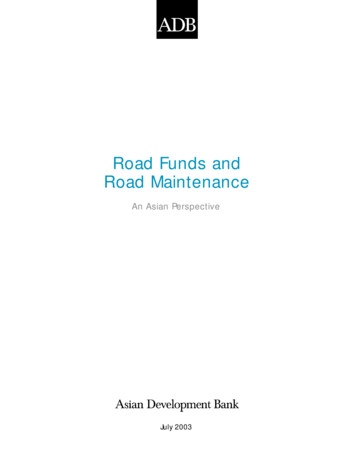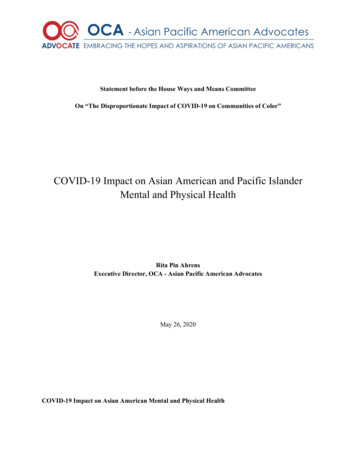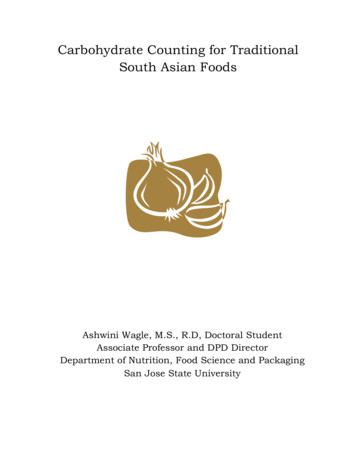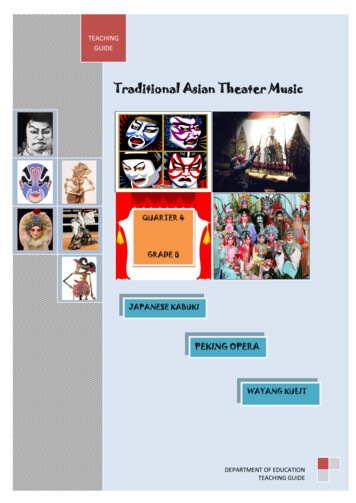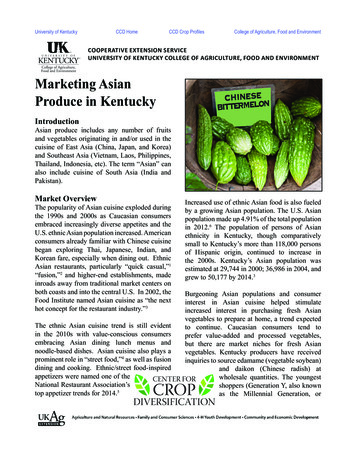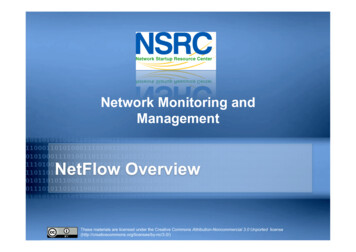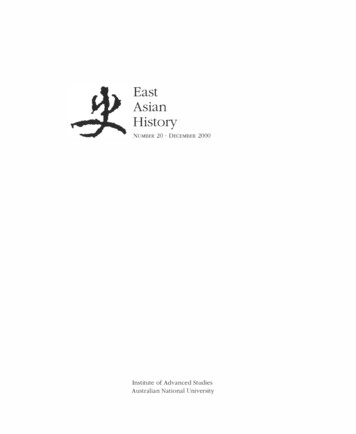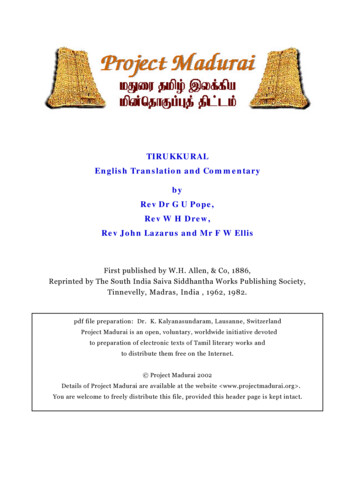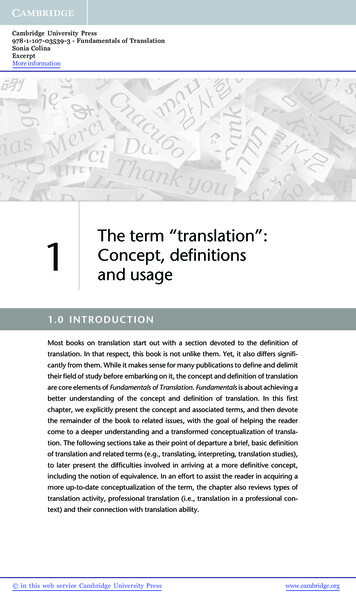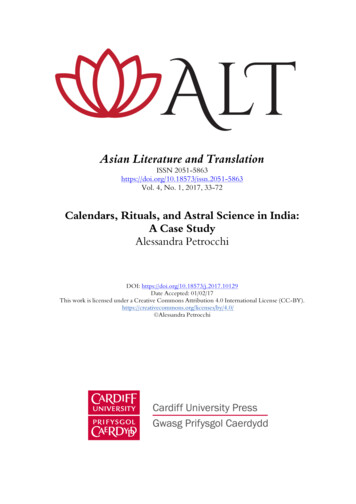
Transcription
Asian Literature and TranslationISSN l. 4, No. 1, 2017, 33-72Calendars, Rituals, and Astral Science in India:A Case StudyAlessandra PetrocchiDOI: https://doi.org/10.18573/j.2017.10129Date Accepted: 01/02/17This work is licensed under a Creative Commons Attribution 4.0 International License 0/ Alessandra Petrocchi
Calendars, Rituals, and Astral Science in India:A Case StudyAlessandra PetrocchiAbstractThis paper analyses the complex variety that characterises the Indian calendric system and itsrelation to culture, history, and society. The aim is to understand the role played in contemporaryIndia by traditional knowledge of astral science. For this purpose, I shall investigate the informationprovided by a modern Hindi pañcāṅga. This denotes a traditional almanac that goes back to a wellestablished practice of calendar making attested in Sanskrit literature. In medieval India, thepañcāṅga forecasted celestial phenomena such as the weather and solar eclipses and was commonlyused to establish the dates for religious festivals, to know auspicious moments to undertake activitiessuch as trading, marriage, traveling, and to set up the performance of vratas (religious ceremonies)and saṃskāras (Hindu initiation rituals at important occasions of life). Different versions of pañcāṅgasare published nowadays in all the Indian regional languages and even in English by jyotiṣīs or‘astrologers’. Since early times, festivals, rituals, and religious ceremonies have been marked in Indialunar months and the passage of the seasons. The present paper shows that astrology still plays amajor part in every sphere of human life and that, in the course of a month, the changing phases ofthe moon coincide with the ritual observance of ancient religious practices.Keywords: Astral Science, Hindu Rituals, Solar and Lunar Calendars, Pañcāṅga.Astral science has played an important role in Indian society throughout history. Yet,‘despite the fact that horoscopic astrology has enjoyed more widespread and lastingacceptance within India than in any other cultural environment, and continues to do so’,1Sanskrit texts on jyotiṣa (jyotiḥśāstra denotes the “science of heavenly bodies”) have not10109Martin Gansten, “Astrology,” In Oxford Bibliographies, 2014. https://doi.org/10.1093/OBO/9780195399318-
Asian Literature and TranslationVol. 4, No. 1, 201733-72received the attention they fully deserve from Indologists. As pointed out by Gansten, whilenon-scholarly publications on Hindu astrology proliferate, ‘academically reliable secondarysources do not, and the same is true of text editions and translations.’2A few decades ago, the pioneering and extensive work by Pingree brought to light theimportance of astrology within Sanskrit literature and Indian society. What we know todayof the existing manuscripts on astronomy, mathematics, and the various branches ofastrology is mainly due to the comprehensive survey carried out by Pingree, published inhis Census of the Exact Sciences in Sanskrit (henceforth CESS), which he started in 1955 and leftunfinished when he died in 2005. An investigation of the CESS clearly shows the largeamount of works on astral science; texts on mathematics are relatively small in numbercompared to the bulk of texts on astrology and other sub-divisions of jyotiṣa. Following hispredecessor, Neugebauer, who, in 1951, published the influential The Exact Sciences inAntiquity, Pingree has shown the Babylonian and Greek influence on the development ofIndian jyotiṣa materials. Recently, in the light of new textual findings some of hisassumptions have been partly challenged by a group of Japanese scholars led by MichioYano.3Early jyotiṣa is concerned with the preparation of calendars to fix the date of sacrificialrituals. Since the period of the early Vedic literature, rules for various rituals and sacrificeshave established fixed times for particular rites, such as at the full moon, new moon, and atthe equinox. Calendric knowledge was thus of considerable importance to Vedic peoplesfor various kinds of rituals. The purpose of the practices that were included within jyotiṣashifted somewhat later on. It was no longer as important to decide when the Vedicsacrifices should take place, as it was to fix the proper moments (muhūrta) for performingthe saṃskāras (Hindu rituals) and to compute the almanac (pañcāṅga). The almanacindicated, amongst other things, the following: festivals; auspicious and inauspicious times;23Martin Gansten, ‘Astrology’.Michio Yano, ‘Calendar, Astrology and Astronomy.’34
Asian Literature and TranslationVol. 4, No. 1, 201733-72the entries of the Sun into zodiacal signs (saṅkrānti); and eclipses (grahaṇa). As a matter offact, while early Indian astronomy is intimately linked to the need to perform the Vedicsacrifices at specific times according to the position of the sun and of the moon, after the2nd century CE, the goal was, more often than not, to compute with accuracy the positionsof the planets for the purpose of casting horoscopes. This shift drove the laterdevelopments of the astral sciences.It should not, therefore, be surprising that astrology, together with medicine, is thetraditional science that has survived best in modern India. Jyotiṣ (the Hindi term for‘astrology’ from the Sanskrit jyotiṣa) remains an essential, all-pervading, aspect of the livesof many Hindus. Even today, parents of a new baby will visit an astrologer to see how theycan best guide their child in the future; the same is true for other important matters suchas marriage, travelling, trading, and wealth-related issues. Some Indian Universities offeradvanced degrees in so-called ‘Vedic astrology’, where it is thought to retain a respectfulposition among modern sciences. In this regard, I would like to consider the expression‘Vedic Astrology’. For some time now, Hindu astrologers have called their art ‘VedicAstrology’ even though the development of Hindu astrology does not predate Alexanderthe Great (who invaded the North-West part of the Indian subcontinent in the 4th centuryBCE, which coincides with the closing phase of the Vedic period). Even in the West, theexpression ‘Vedic Astrology’ has become strikingly popular; various Western practitionersclaim to follow astrology as explained in the Vedas. Many amateur astrologers (Hindu aswell as Western) see their art gaining intellectual prestige by being associated, even only inname, with the authority of a traditional discipline practiced in an ‘ancestral sacred past’. Itis interesting to note that Vedic Astrology has also found very fertile ground in the growthof the New Age movements. A significant amount of books, websites, and even schools andcourses throughout India and Western countries advertise the practice of ‘Vedic Astrology’.Unfortunately, much of this phenomenon involves people with little or no knowledge of35
Asian Literature and TranslationVol. 4, No. 1, 201733-72Sanskrit texts on literate astrology, whose aim is often only economic advantage. One candownload pañcāṅgas and pay for astrological consultations from India. There are manyother ways in which Hindu astrologers and gurus sell religious experiences via the internet.Virtual religious rituals have become a widespread phenomenon. For instance, nowadaysone can buy, from anywhere in the world, the ritual offering of a pūja that will beperformed by a guru in India and will mitigate the effects of bad astrological events. It iseven possible to download software generating the basic information of a daily pañcāṅga fora given place; once the name of the place, the location, altitude, latitude, and the time zoneare known, the software will calculate the auspicious moments of the day, the lunarconstellation, the lunar day, etc.The present paper is a study of contemporary Indian practices of astral science andcalendrics. Having considered the historical context in which calendric computations weredeveloped, I shall examine the underlying principles of Indian solar and lunar calendars inorder to present an analysis of a modern Hindi pañcāṅga, which I have drawn from a Hindiastrological website. The case study selected is one of many pañcāṅgas; it has been selectedfor the variety of information it provides. It should be acknowledged at the outset that notwo pañcāṅgas agree completely. Nevertheless, the present case study compellinglydemonstrates that, in India, rituals, religious ceremonies, and daily life are still stronglydependant on astronomical events and astrological beliefs.1. Early astronomy and calendric knowledgeIn Sanskrit literature, works on astronomy, mathematics, and astrology were all part of thetraditional and specialized branch of learning called jyotiḥśāstra.4 Jyotiṣa was one of the six4I would like to thank Prof. A. Passi and the anonymous reviewer for helpful comments on earlier versions ofthis paper. Needless to say, I alone am responsible for remaining errors.36
Asian Literature and TranslationVol. 4, No. 1, 201733-72Vedāṇgas, the six auxiliaries disciplines supporting Vedic rituals. The term jyotiṣa denotes amix of astronomy, mathematics, astrology, and divination that was the chief matrix ofliterate mathematical and astronomical knowledge in the middle of the 1st millennium CE. 5The earliest known mathematical exposition of astronomy and calendric knowledge inSanskrit is the Jyotiṣavedāṅga.6 The Jyotiṣavedāṅga has come down to us in two versions: theshorter Ṛk recension, consisting of thirty-six verses and traditionally attributed to Lagadha,and the Yajurjyotiṣavedāṅga, which seems to expand and modify it. According to Pingree,7‘the astronomy of the Rk-recension [which is the earliest] was formulated in the fifth orfourth century B.C. on the basis of information about originally-Mesopotamian methodsand parameters transmitted to India during the Achaemenid occupation of the Indus Valleybetween ca. 513 and 326 B.C.’8 In the Jyotiṣavedāṅga, some verses clearly reflect the relationbetween ritual, calendric utterances, and mathematical astronomy in the context of theVedic sacrifice.9 The calendric techniques found in this text represent a synthesis of rulesand computations from Greco-Babylonian sources. It mentions measures and rules forcalendric computations using a year length of 366 days: a day comprises thirty of the unitscalled muhūrtas (equal to forty-eight of our minutes) or sixty ghaṭikās (a ghaṭikā is half of amuhūrta); the yuga is a five-year intercalation cycle containing two intercalary months; the5A thorough history of jyotiḥśāstra literature is found in David Pingree, Jyotiḥśāstra: astral and mathematicalliterature (Wiesbaden: Harrassowitz, 1981).6Among scholars, the date and authorship of this text has long been a controversial issue.7David Pingree, ‘The Mesopotamian Origin of Early Indian Mathematical Astronomy,’ Journal for the History ofAstronomy 4, no.1 (1973): 1-12. https://doi.org/10.1177/0021828673004001028While Pingree argues that Vedāṅga astronomy was formed under Mesopotamiam influence during theAchaemenid occupation of the Indus valley, Ōhashi says that Vedāṅga astronomy is based on actualastronomical observations in North India. See Yukio Ōhashi, “Development of astronomical observation inVedic and Post-Vedic India,” Indian Journal of History of Science 28, no. 3 (1993): 185-251.9Cf. Ṛgjyotiṣavedāṅga 36 and Yajurjyotiṣavedāṅga 3 translated in B.V. Subbarapaya and K.V. Sarma, Indianastronomy: a source-book, based primarily on Sanskrit texts (Bombay: Nehru Centre, 1985), 1.37
Asian Literature and TranslationVol. 4, No. 1, 201733-72tithi or ‘lunar day’ and the sequence of the 27 nakṣatras or ‘lunar constellations’ (here eachassociated with a presiding deity) seem to be fully integrated into lunisolar calendricastronomy.10In order to understand the relationship between astronomy and ritual that, even today,is pervasive in traditional almanacs, it must be remembered that Vedic texts prescribe theperformance of periodic sacrifices at particular times, such as the new and full moon,solstices, and equinoxes.11 Plofker points out that Vedic calendric concepts are ‘[ ]obscured by the brevity of the allusions to them and by the apparent inconsistenciesamong some of them. Moreover, it is often difficult to tell when a scriptural statement isintended to convey specifically astronomical information and when it should beinterpreted otherwise.’12Yet, ‘by the Middle Vedic period at the latest, attempts werebeing made to regulate a basic lunisolar calendar arithmetically.’ For instance, it is in theYajurveda (Taittirīyasaṃhitā 4.4.10.1-3) and in the Atharvaveda (19.7.2-5) that the firstreferences13 to the twenty-seven lunar constellations are found.14 According to the nakṣatraoccupied by the moon and observing the position of the sun and moon with respect to thestars, the sacrificial priests were able to identify and record the time in the calendar to10During the later Vedic period, the meaning of the term nakṣatra shifted from its original meaning of ‘star’ toone of the 27 groups of stars regarded as the ‘lunar constellations’ along the ecliptic.11Vedic new and full moon rituals are sacrificial ceremonies preceding other Vedic rituals. A study of Vedicliterature and full moon and new moon sacrifices is that of P.E. Dumont, ‘The Full Moon and New MoonSacrifices in the Taittirīya-Brāhmaṇa,’ Proceedings of the American Philosophical Society 101 (1957): 216 ̶243; 103(1959): 584̶̶ ̶608; 104 (1960): 1-10.1213Kim Plofker, Mathematics in India (Princeton, N.Y; Oxford: Princeton University Press, 2009), 20-30.See Arthur Anthony Macdonell and Arthur Berriedale Keith, Vedic index of names and subjects, vol.1, (London:1912), 409-431.14The first mentions 28 nakṣatras, and the latter 27. On the two systems of nakṣatras, see Michio Yano,“Calendar, Astrology and Astronomy,” in The Blackwell Companion to Hinduism, ed. Gavin
Asian Literature and Translation Vol. 4, No. 1, 2017 33-72 34 received the attention they fully deserve from Indologists. As pointed out by Gansten, while non-scholarly publications on Hindu astrology proliferate, ‘academically reliable secondary sources do not,
